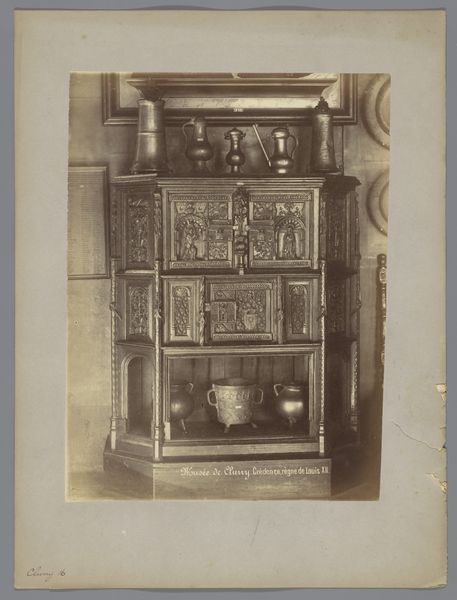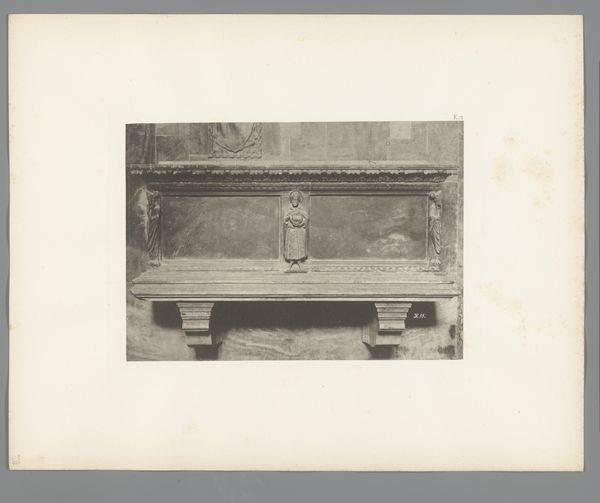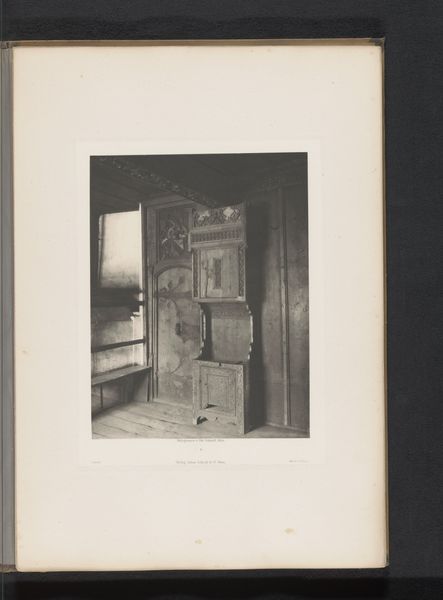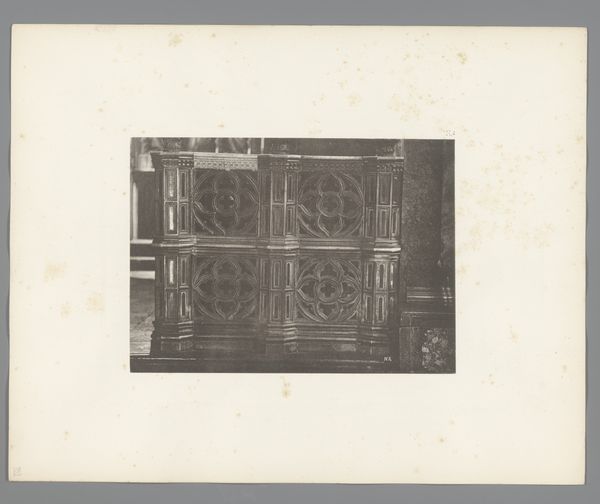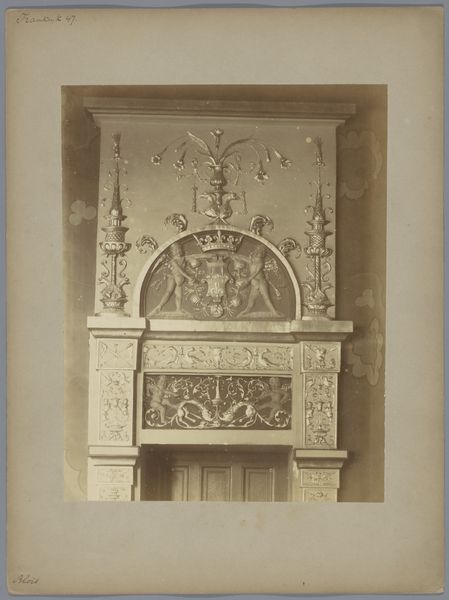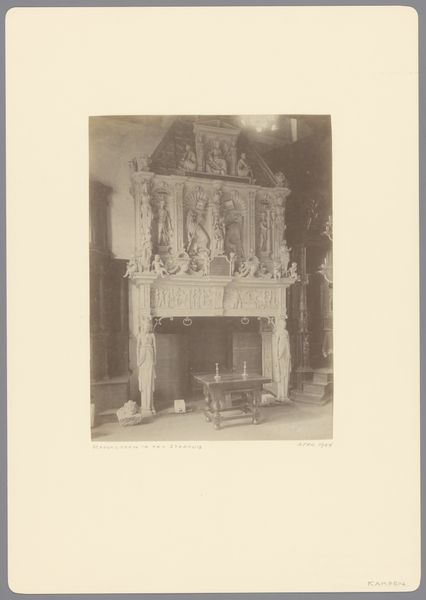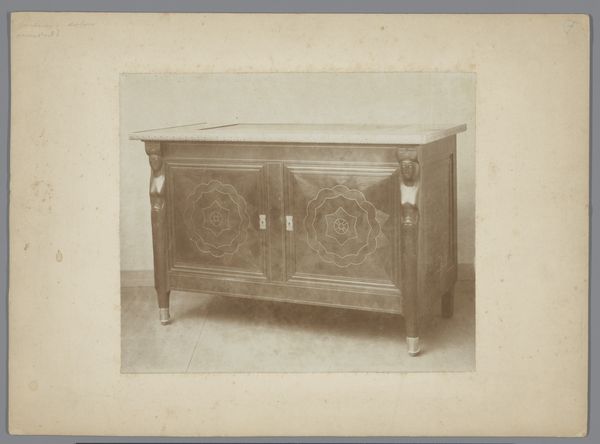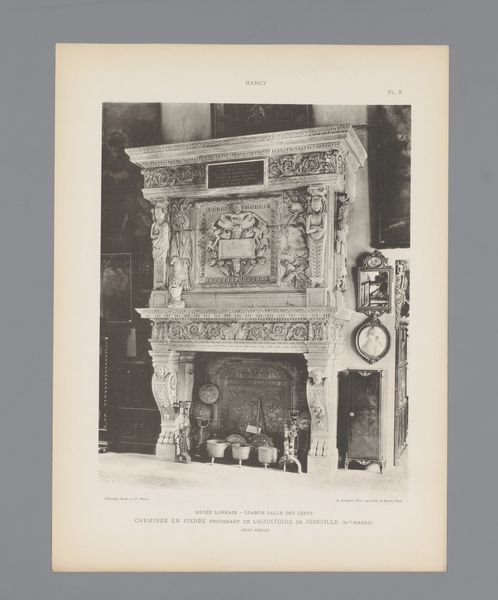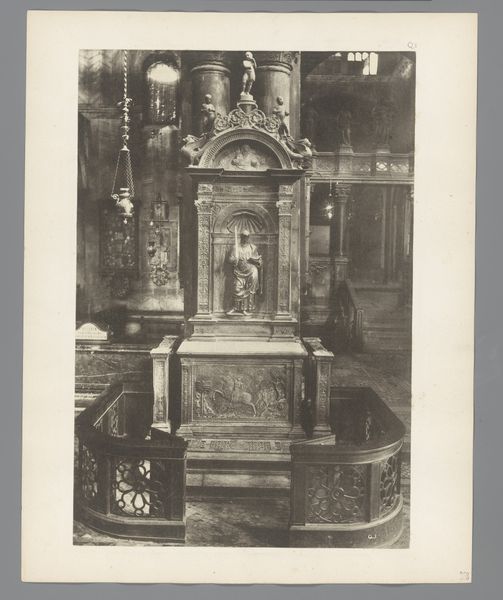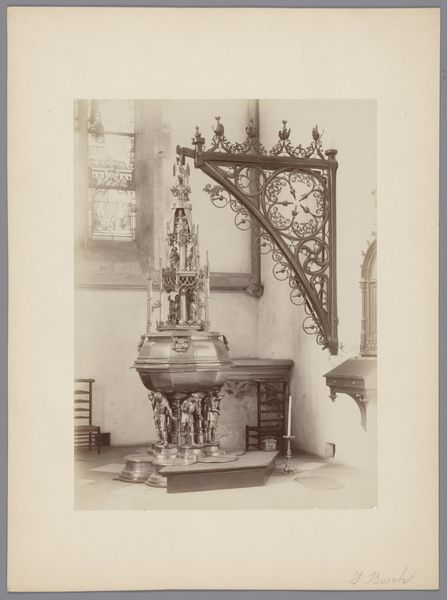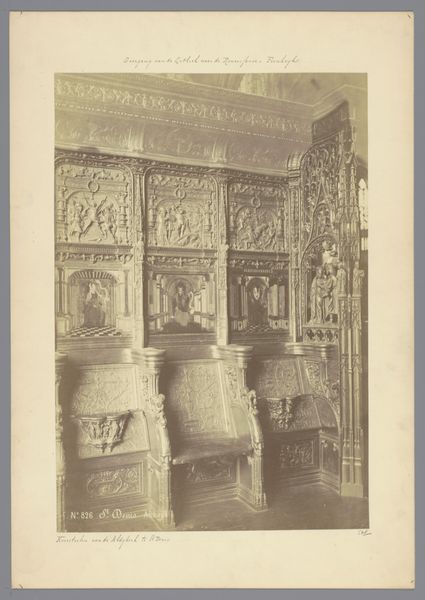
Dimensions: height 390 mm, width 300 mm
Copyright: Rijks Museum: Open Domain
Editor: Here we have "Antique Cabinet with Porcelain," an engraving from somewhere between 1857 and 1864. The anonymous artist has created an intricate scene. I’m really drawn to the detail in the wood carving, how it gives the piece so much texture. What stands out to you? Curator: Note how the artist uses engraving techniques to create texture and form. Consider the linear structure in creating a sense of depth. The artist uses clear tonal variations to denote volume within the frame, and also uses hatching and cross-hatching, to define the different surfaces and bring definition to the objects displayed on the cabinet. Editor: I see what you mean about the lines giving a sense of depth. It is like the artist is trying to draw attention to the inherent aesthetic qualities, the arrangement of form itself? Curator: Precisely. The structure presented showcases Romantic ideals in its careful depiction of this genre piece. Note that it doesn’t really seem to be trying to be more than a visual display and study of line. Now, observe how the artist used line to showcase dimension. What effect does this formal approach create? Editor: It really makes you focus on the visual elements rather than any narrative. It allows you to analyse each line, each tone, as well as how each feature helps describe form. So you’re more likely to examine what you see? Curator: Precisely. And it emphasizes the artistry and craftsmanship inherent in the medium, an engraving which showcases art itself. Editor: That's fascinating! It’s made me appreciate the thought process behind this choice. Thanks for the insightful observation! Curator: It’s always rewarding to see an artwork with fresh eyes, and formal analysis gives you some of those tools.
Comments
No comments
Be the first to comment and join the conversation on the ultimate creative platform.
